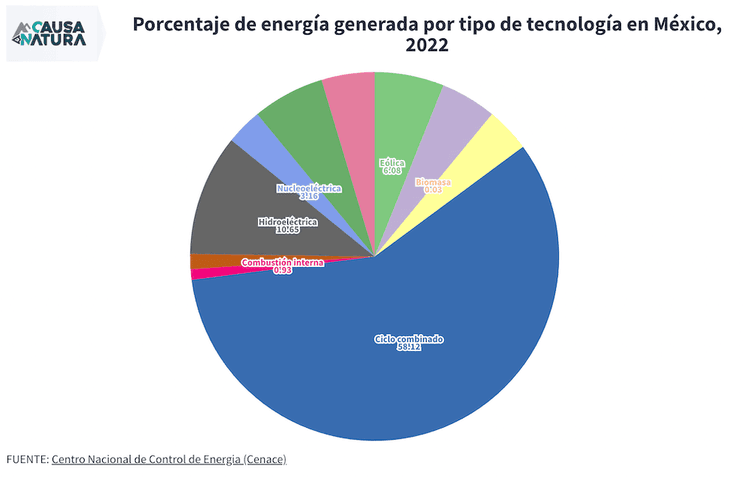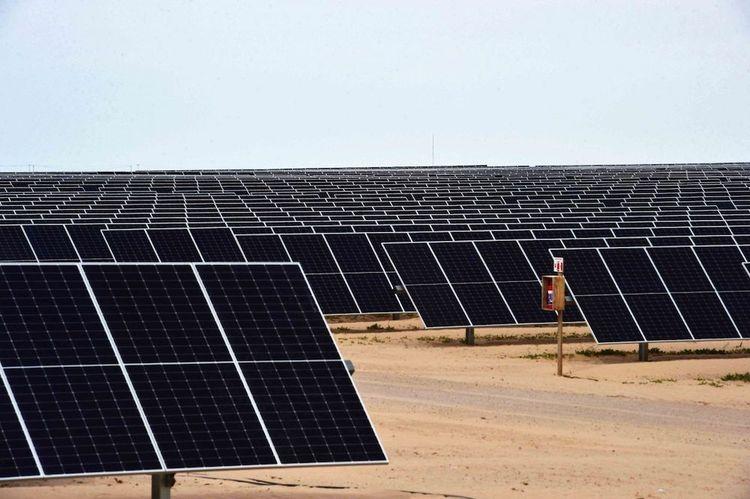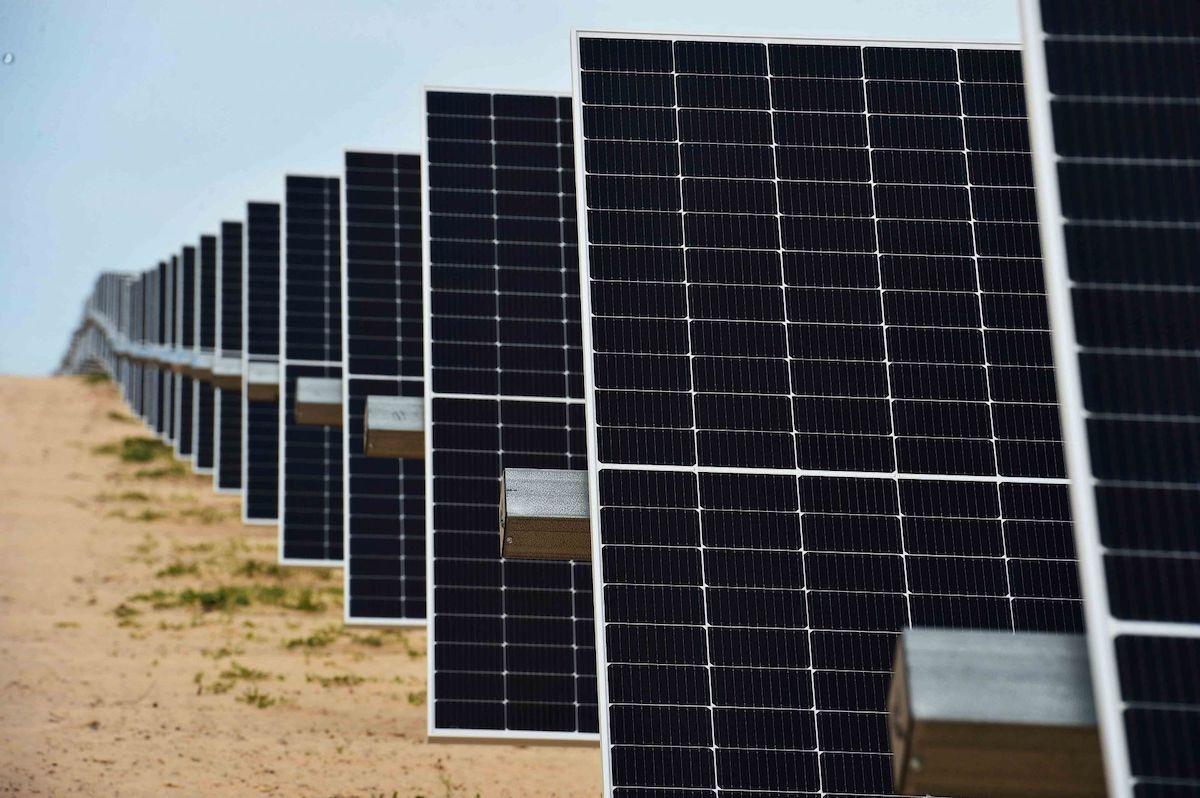The solar power plant in Puerto Peñasco will not be enough to meet the goal of the Energy Transition Law to generate 35% of electricity with renewable energy by 2024, said César Rivera, a researcher at the Center for Economic and Budgetary Research (CIEP).
In addition, despite the fact that this project brings Mexico closer to energy sovereignty, the country continues to depend on fossil energies derived from the combustion of materials and substances in a solid, liquid state containing carbon, one of those responsible for the greenhouse effect or also known as global warming.
90% of the natural gas used by Mexico is imported and 60% of the electricity it generates is through the use of gas, according to the report “The gas industry in Latin America and the Caribbean” by PODER Latam.
[Click for interactive graphic]

Renewable energies (wind, photovoltaic, biomass, geothermal and hydroelectric) until 2022 represented only 23% of the total energy generated in the country, according to the National Center for Energy Control (Cenace).
Until 2020, Mexico was the largest importer of natural gas in Latin America and its main supplier is the United States, which supplies it with more than 50%, placing it in great vulnerability due to the dependence that this generates.
During the pandemic, energy policy still consisted of strengthening State producers by prioritizing fossil fuels, as renewable energy projects decreased, while those related to carbon-based generation increased with projects such as the Dos Bocas “Olmeca” refinery, inaugurated in 2022, Rivera said.
One of the main reasons why green energy is being invested in green energy, César Rivera mentioned, is because the domestic market is demanding increasingly clean energy, as is the case of FEMSA and Bimbo, which have goals of using 100% and 85% renewable energy respectively in their production processes.
Meanwhile, another reason has to do with the fact that varying energy generation sources helps not to rely mostly on a single energy source.
“We must also look at other types of energy sources, such as geothermal energy and wind energy... This vision that is being taken of seeing clean energy is also an important change because at the beginning of the six-year term (of AMLO) it was not seen, today almost at the end of its six-year term, it is an important step”, he points out.
A solar bet
The inauguration of what will be the largest photovoltaic power plant in Latin America, in the Sonoran desert, in northwestern Mexico, has been presented as a commitment by the government of President Andrés Manuel López Obrador to strengthen energy sovereignty.
This plant was planned since 2021 as a project that will prevent the emission of 1.4 million tons of CO2, covering an area of 2,000 hectares and that would generate electricity to illuminate 100 million 10-watt energy saving lamps, according to a bulletin published by the Federal Electricity Commission (CFE).
In the technical document of the project presented by the CFE, it is mentioned that the national electricity production in 2020 was 321 thousand 347 GWh, of which 86 thousand 988 GWh corresponded to Clean Energy (27.85%).
In its phase 1, the Photovoltaic Power Plant, which will begin operations in April, will add 420 MW to the Alternating Current (AC), and is expected to generate 1,195 GWh per year considering the next two remaining stages of the project.
Each of these megawatts, according to Javier De la Cruz Soto, a researcher at the National Council for Science and Technology (Conacyt) at the Sonora Institute of Technology, will displace another megawatt generated from fuel oil or diesel, helping to mitigate the climate crisis.
Reception in Sonora

Panels installed in the Puerto Peñasco photovoltaic plant. Source: Cuartoscorso
The investment in this new plant has been well received by Sonoran society, according to de la Cruz. However, the main criticism he has received has been about the location, since several technicians like him mention that the investment could have been used to install small, smaller power plants in different locations accompanied by a reinforcement of the network to avoid saturation.



Comentarios (0)